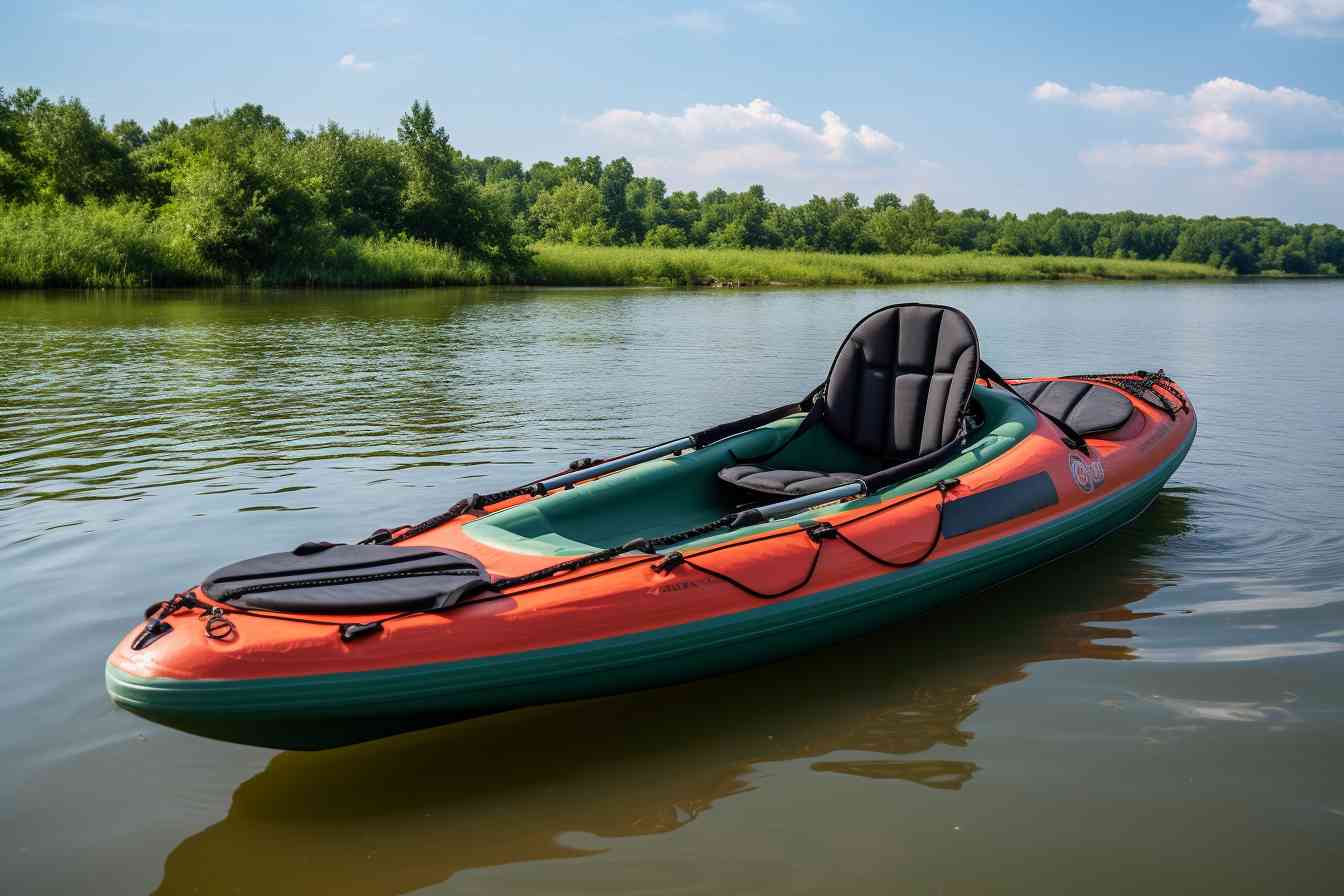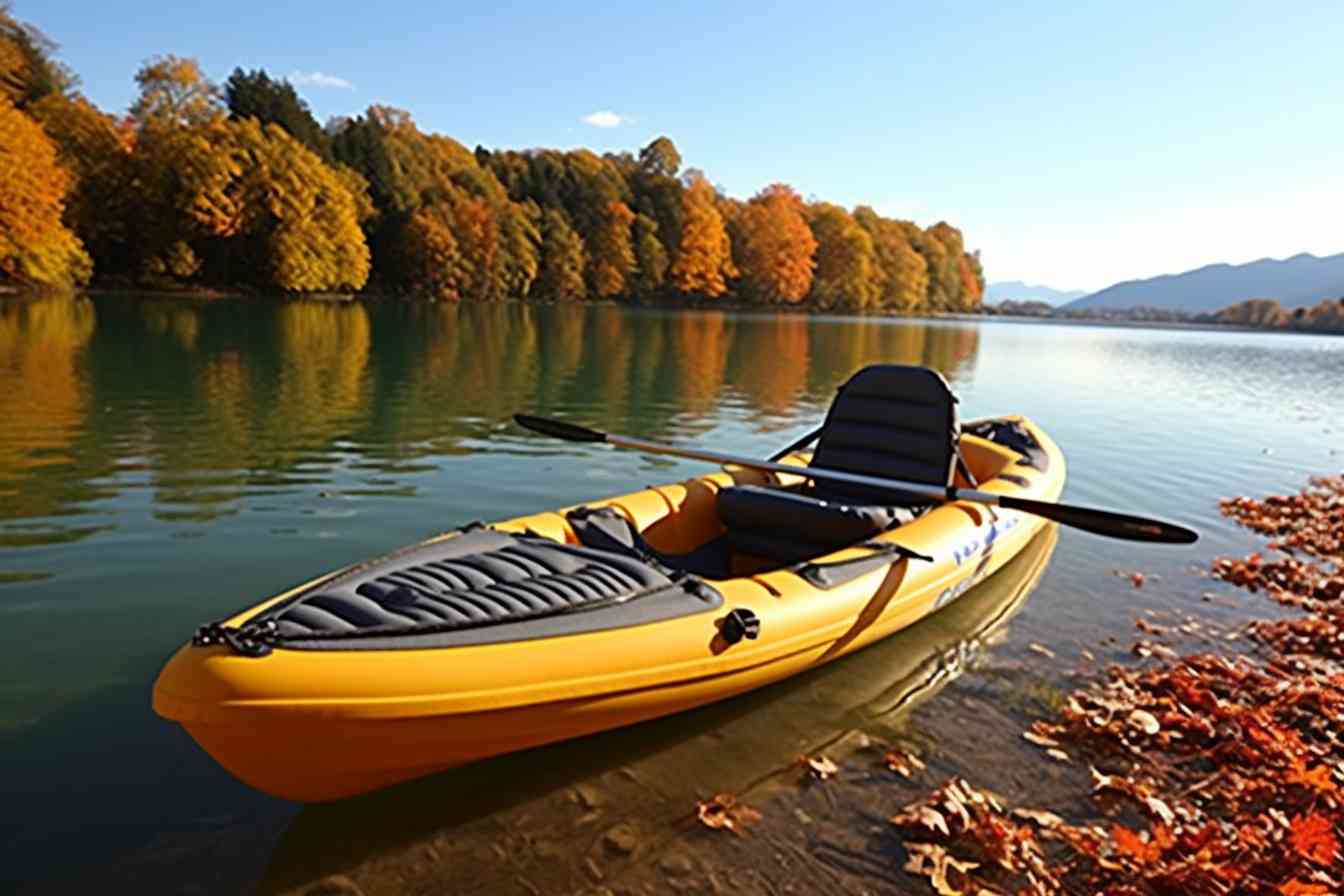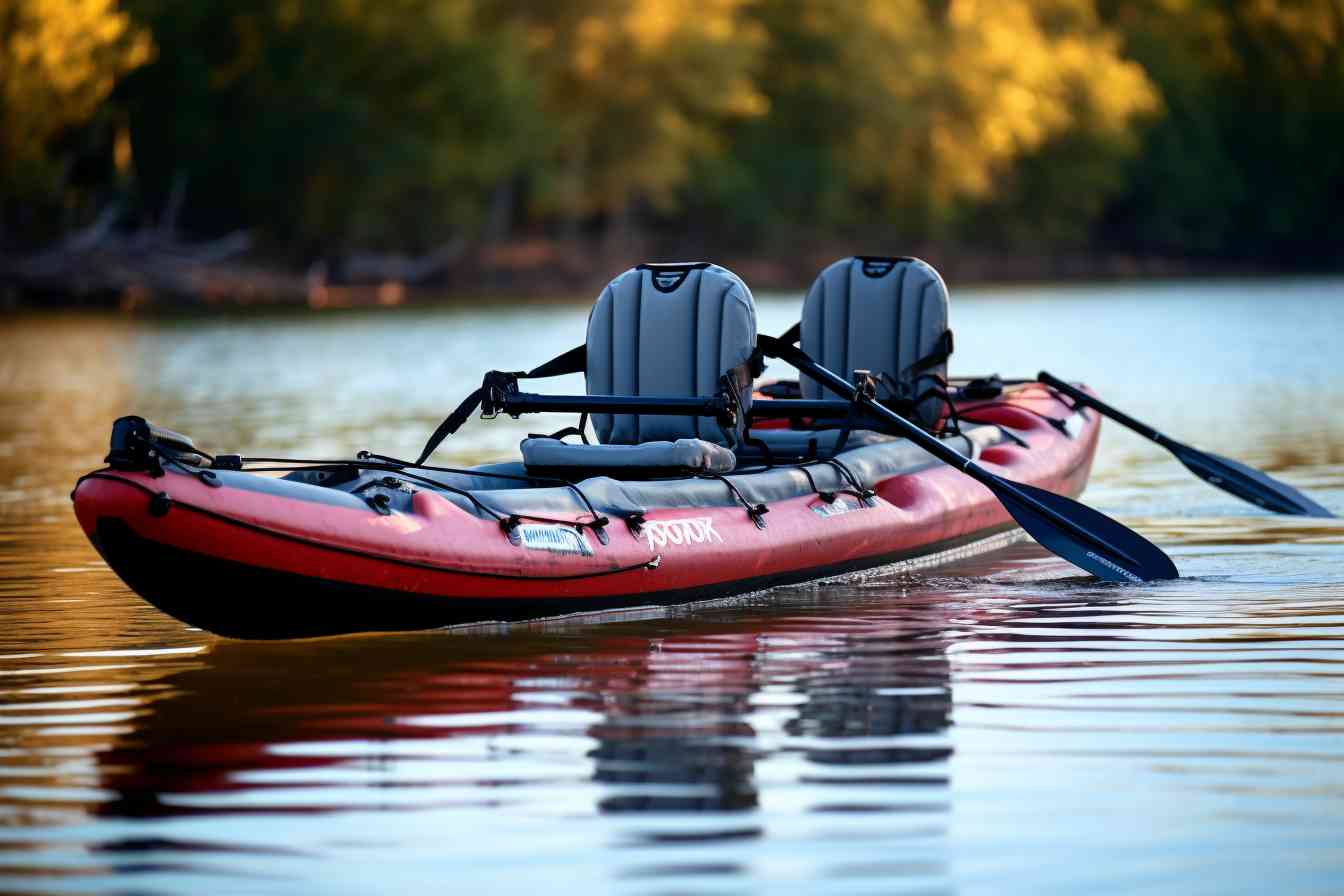Intro: Best Kayak For Beginners

Well there, my friend… Let’s dive right into the topic – the best kayak for beginners. So many options, it’s like a buffet of floating wonders! Where do you even start? I know that feeling, believe me! But fear not – that’s why I am here, to steer you in the right direction.
Now, so you’re a novice, right? Not to worry, we’ve all been there. The wild currents – thrilling yet intimidating, nerve-wracking yet exciting. But one thing’s for sure; the experience is nothing short of epic! So, the best way to start this adventure is by picking the right kayak.
The first thing you should look for when you’re out kayak shopping is stability. You want something that keeps you afloat but doesn’t rock you overboard every time things get choppy. Oh, and look for kayaks with a wide hull design – they tend to be the most stable. They might not be the fastest, but hey, you ain’t in a race, are you?
Next up – comfort! If you’re not comfy, you won’t be out there for long. Ensure the kayak has good back support, and the seating is adequately padded. ‘Cuz let’s be honest, nobody likes a sore rear end, huh?
Lastly, look for a kayak that’s light and easy to carry, especially if you’re going solo. You don’t want to be dragging around a behemoth of a kayak, do you?
Remember, there’s no such thing as a perfect kayak, but there’s always a perfect kayak for you. So, take your time, do your research, and get the one that suits you best.
What Type Of Kayak Is Better For Beginners?

Well, let’s dive right in! As a seasoned kayaker, I’ve been asked countless times – what type of kayak would be best for novices? Truthfully, it hinges heavily on what you’re hoping to get out of your paddling experience.
Now, the sit-on-top kayak, it’s a fabulous choice for beginners, and here’s why – they’re amazingly stable and easy to get in and out of . You see, they have wider hulls which contribute to a higher degree of stability, a great comfort for any beginner. You’re far less likely to capsize, which would definitely put a damper on your day. Another great thing? They’re self-draining, so you won’t need to fret about taking on water.
Yet, let’s not dismiss the sit-in kayak, that’s another opton for you greenhorns . These kayaks give you a closer feel to the water and offer better control. Plus, with a sit-in kayak, you’re more protected from the water, a big bonus if you’re paddling in cooler conditions. However, keep in mind, if you flip a sit-in kayak, it’s a bit trickier to recover from compared to a sit-on-top one.
Now, there’s the inflatable kayaks, and you might raise an eyebrow at this, but hear me out—these aren’t the pool floaties of your childhood. A good quality inflatable kayak offers portability, ease of storage and are, surprisingly, pretty resilient . They’re great if you’re short on storage space or if you’re hoping to hike to a secluded launch spot.
The choice is yours. All you got to do is consider your intended use, comfort level, and personal preferences. Trust me, there’s a perfect kayak out there for you, buddy. Now what are you waiting for? Dive into the world of kayaking and let the adventures begin! Happy paddling!
What Is The Easiest Kayak To Get In And Out Of?

[]
Well, well, well! Isn’t this a swell question? If you’re just starting out on your kayaking journey, you’re going to want to ease into it – pun absolutely intended! As a paddle-slinging veteran, I can tell you with confidence that the easiest kayak to clamber in and out of would be the sit-on-top kayak or, as some prefer to call it, the SOT.
What’s special about an SOT? Practicality, my friend! For beginners, simplicity is the way to go, and SOTs are the epitome of simplicity. Think of it like this – there’s no cockpit to squirm into, no closed-off spaces that make you feel like you’re trapped in a claustrophobic’s nightmare. You just, uh, you know… sit on top.
Now, some might tell ya that these models lack in speed or control, but I wouldn’t fret about that. As a beginner, you’d be more focused on getting the hang of paddling and maneuvering without flipping your kayak. And, believe me, an SOT gives you more stability than a politician in a safe seat!
So there you have it. If you’re just dipping your toes (literally!) into the world of kayaking, I’d recommend starting with a sit-on-top model. They might be a bit bulkier and slower than their deck-covered counterparts, but they offer a whole lot of convenience, comfort, and most importantly, confidence. And isn’t that what we all need when we’re starting out with something new? Operation “getting in and out of a kayak without belly-flopping into the water” just got a whole lot easier with an SOT, am I right?
Is A Sit On Or Sit In Kayak Better For Beginners?

Are you a novice kayaker trying to decide between a sit-on-top or a sit-in kayak? Well, there’s no definitive answer to that because every person has unique needs and preferences. However, I’m quite happy to guide you through the pros and cons of each.
Sit-on-top kayaks tend to be more beginner-friendly, I tell you. They’re typically wider and more stable, making them an excellent choice for beginners who are uncertain about their balance or are afraid of capsizing. They’re also self-draining, thanks to the scupper holes, which is quite a relief for many newcomers. There are no confined spaces to worry about – a huge plus if feeling trapped is a concern.
On the flip side though, sit-in kayaks offer more protection from the elements – a greatfeature if you plan to kayak in cold weather or choppy waters. They are also often faster and allow you to stay drier, due to the enclosed design. However, if tipped over, they can fill with water and need to be drained, which can be a challenge for beginners.
So, my friends, which is better entirely depends on your comfort, the environment you’ll be kayaking in, and your personal preference. Are you planning to leisurely paddle on calm lakes or conquer swift currents? Is there a concern of feeling confined? Answer these questions, and you’ll be closer to making your decision. There’s no right or wrong here. Choose what feels right for you, and the fun will follow, believe me!
What Is A Good Length For A Beginner Kayak?
Oh, buddy! Even talking about kayak lengths just gets my heart all aflutter! Being the complete kayak nerd that I am, I can attest that the length of your kayak does wonders for your journey on the water. For a beginner, it’s best to stick with kayaks that are between 9 to 12 feet long. Why’s that? Well, shorter kayaks in the 9 to 10 feet range may be easier to maneuver and control, especially for novices who are still honing those essential paddling techniques. They’re pretty light, too – a real cinch to lug around.
On the other side, kayaks around 11 or 12 feet long offer a nice roomy space for those among us who enjoy a little more wiggle room (count me in!). And bonus points- they’re often more stable, which is a crucial factor for beginners who haven’t quite got their sea legs yet. They might be a wee bit heavier, but they track better in the water, providing a smoother ride overall.
Each length has its pros and cons, it’s all bout’ finding the right one that ticks your boxes. Just keep in mind, chum, paddle control, stability, and comfort are key when you’re getting started with kayaking. Oh, and let’s not forget – safety must always be the top priority! Phew, I can go on about this all day… But let’s stop here, shall we? I hope you found this info useful, my dear paddlers!
Final Verdict
Alright folks, let’s get straight to the point – the best kayak for the beginners, in my opinion, is the Intex Challenger K1 Kayak. Why, you ask? Well, there’s a whole slew of reasons!
Firstly, it’s a cinch to set up! Remember, as a beginner, you don’t want a kayak that needs a PhD in engineering to assemble. This beauty can be ready in roughly ten minutes, letting you dive right into the fun part – kayaking.
Next, it boasts of stability. It is designed in a way that bestows balance and steadiness, minimizing any unanticipated dips in the water. Its nimble and light structure also makes it great for those starting out on calmer waters. On top of that, it’s extremely durable. Constructed from puncture-resistant material, it defends well against potential damage.
Lastly, let’s not forget about comfort. The Intex Challenger K1 Kayak strikes a perfect balance between sturdiness and a comfortable seating arrangement. It’s like you’re in your favorite armchair, but instead of being in your living room – you’re out in the middle of a picturesque lake.
To put it into perspective, this kayak is like the key to Wonderland for beginners – it holds the magical beauty of kayaking without the complexity and challenges. So, if you’re planning to take up kayaking, the Intex Challenger K1 Kayak is the one that you should consider. Well, that’s my verdict, at least!
Frequently Asked Questions
Q1: What makes a kayak good for beginners?
Ah, great question! A beginner kayak should be stable, durable, and easy to maneuver. It’s ideal if it has a wide beam for better balance, adjustable footrests for comfort, and a decent storage space for gear.
Q2: Should I get a sit-in or sit-on-top kayak as a beginner?
Hmm, that’s a double-edged sword! Sit-on-top kayaks are generally more beginner-friendly due to their stability, ease of use, and the ability to easily get on and off. But, sit-in kayaks may provide more protection in cold weather or water. It really depends on your personal preference and where you plan to paddle.
Q3: How much should I spend on a beginner’s kayak?
Oh boy, that’s a toughie! The price can vary significantly, broadly ranging from $200 to over $1000. But, personally, I’d say a decent beginner’s kayak will cost around $300-$600. Remember, safety and comfort should always be a priority!
Q4: What size kayak is suitable for beginners?
Well, generally, shorter kayaks between 9 to 12 feet are easier for beginners to handle and maneuver. However, taller individuals might be more comfortable in a slightly longer kayak. It’s a game of trial and error!
Q5: How important is kayak weight for beginners?
Ah, the weight’s a pretty big deal! Lighter kayaks are easier to carry and transport, but they might be less stable on water. Heavier ones may offer better stability but can be a pain to move around. I’d suggest considering a weight that you can comfortably manage.
Q6: How safe are inflatable kayaks for beginners?
Oh, they’re pretty safe! Modern inflatable kayaks are durable and stable. They’re often made of puncture-resistant material and can easily handle calm waters, making them a good choice for beginners. But, remember to always wear a life vest!
Q7: What are some reputable brands for beginner kayaks?
Well, a few brands that consistently receive positive reviews from beginners include Intex, Lifetime, Sun Dolphin, and Pelican. They’re known for their durable, user-friendly, and value-for-money kayaks.
Q8: Can children use adult beginner kayaks?
Hmm, it mostly comes down to the child’s size and strength. Some older kids might manage fine in a small adult kayak. But, there are also kid-sized kayaks available that are lighter and easier for them to handle. Safety first, always!
Q9: What gear do I need as a beginner kayaker?
Well, apart from the kayak, you’ll need a good-quality paddle, a personal flotation device (PFD), and suitable clothing for the water and weather conditions. Additional helpful items might include a bilge pump and a kayak cart for transportation.
Q10: Should beginners take a kayaking class before heading out?
Absolutely, I can’t emphasize this enough! Even with the most beginner-friendly kayak, understanding safety protocols, navigation techniques, and how to handle potential hazards can be invaluable. It gets you ready to face the waves!

